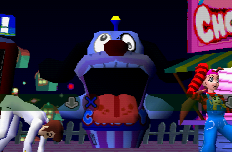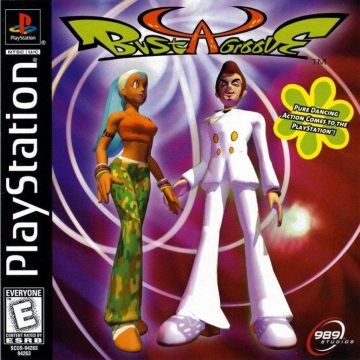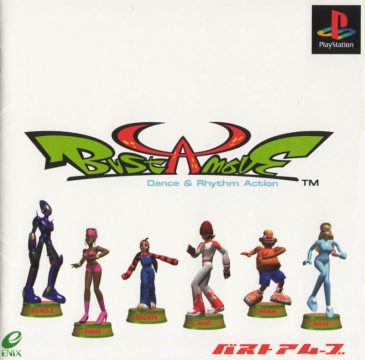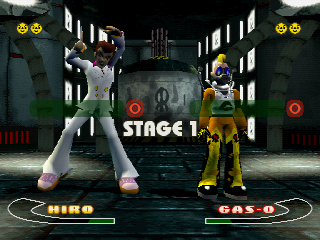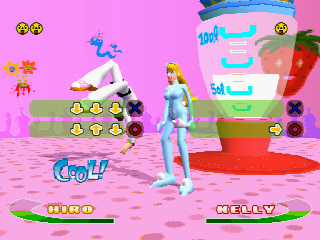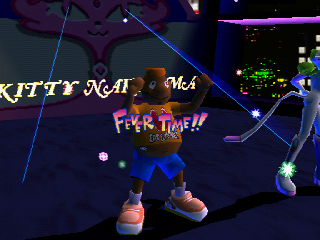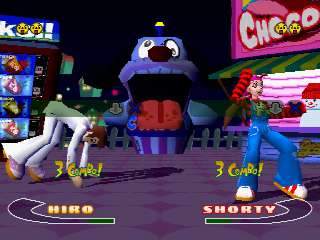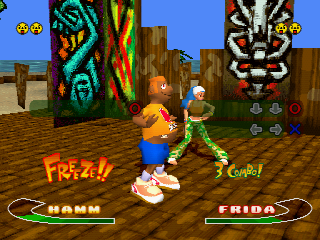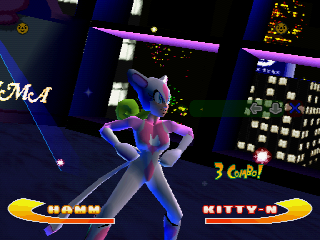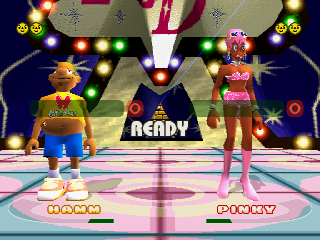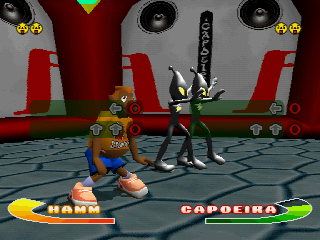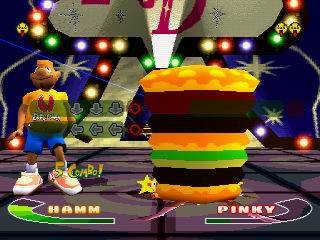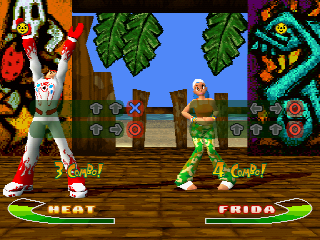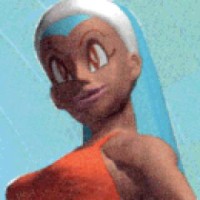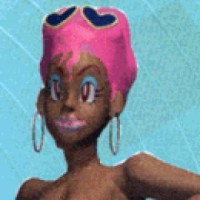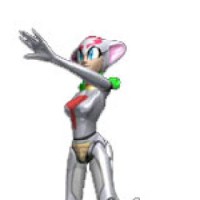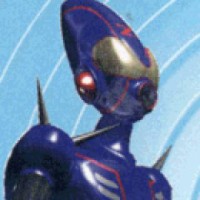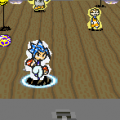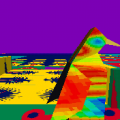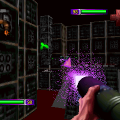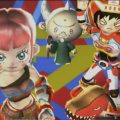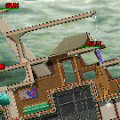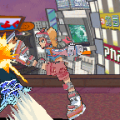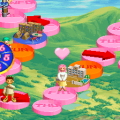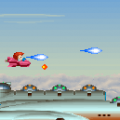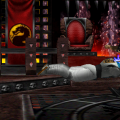The rhythm action genre has seen dramatic evolution in just two decades of existence. Before players could pretend to play in a band or perform realistic motion-tracked dance routines, there was a time when rhythm action games required regular button presses to simple music cues on regular game controllers. While the first game to popularize this type of game was Sony’s Parappa the Rapper, this simple setup ended up being the foundation for the Bust a Groove series, developed by Metro Corporation for the PlayStation. This series, with easy-to-learn rhythm action mechanics and a focus on fluid graphics and modern dance music, was an impressive showcase for the PlayStation’s media capabilities and a pioneering rhythm action game series.
Bust a Groove, otherwise known as Bust a Move – Dance & Rhythm Action in Japan – the name was changed outside of Japan due to a conflict with Taito’s Western title for its Puzzle Bobble series – follows over a dozen characters entering a one-on-one dance competition to acquire the power of the Groovetron.
Bust a Groove combines rhythm action mechanics with fighting game mechanics; each dancer performs different dance moves by pressing a series of arrows displayed on-screen followed by the circle or X button on the fourth beat of the current musical bar. Doing the dance moves correctly increases the player’s Enthusiasm bar and unlocks more complex dance moves and corresponding command chains. At certain points during each stage, Solo segments where one player can dance without having to worry about their opponent fighting back will occur, and these segments can give you a huge boost to your Enthusiasm meter, if you can make good use of them. The player also has a fixed number of special attacks, known as Jammers, available to use on the opposing dancer by ending the current bar with the triangle button. If the move hits, the opponent stops dancing for several bars and loses a large chunk of their Enthusiasm; the opposing dancer may also attack, but you can dodge the attack by timing the square button to the fourth beat after the attack. The player with the higher Enthusiasm bar and the better overall stage performance will win the stage. So, to beat the game, one has to learn the songs and bust those grooves!
The game’s graphics are flowing with style. The art director of the game, Hideyuki Tanaka, who later went on to work on the anime series Super Milk Chan, created a full cast of cartoony dancers, all fully motion-captured with unique dance styles. From Hiro, a conceited disco king; to Kitty-N, a vogueing woman in a cat-girl suit; to Capoeira, a pair of aliens performing Brazilian capoeira, there are plenty of vibrant personalities in the cast. Each character has their own stage which shares their flashy and dynamic nature. Buildings bounce around, minor characters go to and fro, and everybody just seems to be having a good time. There are also impressive particle effects, visible in stages such as the background of Heat’s stage, as well as dynamic environmental changes, such as the tropical storm that occurs on Frida’s stage. If a player wins the stage with a good enough performance, they will see their character’s Fever Time bonus dance animation before the next stage transition.
The primary draw of Bust a Groove is the music; each of the game’s twelve songs were produced by Avex Group, Japan’s largest independent music holding company. The soundtrack consists of a wide range of genres, from disco, to rap, techno, R&B, and many others. For the game’s English release, most of the Japanese vocal songs were re-recorded with English vocals. Despite this, there is still one Japanese-language song in the English versions. Each song is catchy and has an immediate hook, from the irresistible chorus of “Natural Playboy” to the pumping bass and crooning vocals of “Chemical Love”, making for a very memorable soundtrack. It is notable that Kitty-N’s stage song, “Aozora no KNIFE”, or “Blue Knife”, received not only an English translation but a new musical arrangement, one with more of a house flavor, versus the original’s straightforward Eurodance production. The game’s songs each feature a 4/4 beat, making the songs lack structural variety, but due to the game’s mechanics, this is understandable. The songs range from two to two and a half minutes, giving the game an arcade feel of pacing and progression.
Bust a Groove has an average difficulty curve that accommodates beginners while allowing for flexibility during higher-level play. During most phases of the song, the game presents players with easy segments on an upper bar, as well as more difficult segments on lower bars. Performing the more difficult segments will result in more overall Enthusiasm. The player may also input a character’s moves from a different part in their overall routine, but this can prove difficult for beginners. The biggest strategic variable comes in the flexibility of the input system; the game does not require the players to input the arrows exactly on the beat, allowing for creativity in how the player inputs their moves before the fourth count. So, instead of inputting the arrows on the 1-2-3-4 beats, or fourth notes, it is a better strategy to input them during any of the seven smaller beats, or eighth notes, before the final beat of the measure requiring the trigger. This is essential during higher-level play. For those who are struggling, there is a practice mode available, and difficulty settings available in the options adjust the competence of the AI opponents and their inclination to use Jammers. In addition, the easy mode removes the need for the fourth beat trigger commands.
The replay value of the game will depend on the player’s patience. One session of the game’s one-player mode will take the player through all twelve songs of the game in a random order, taking the player about half an hour, assuming they do not fail any of the stages. The main replay value of the game comes from playing the single player mode as each character. There are four additional characters to unlock, along with each character’s “dance view”, available in an unlockable mode of the same name where the player may view each character’s dance moves at various camera angles and speeds. The back of the American version’s jewel case mentions a “dance edit” mode, but this is likely a misnomer for a feature of the dance view mode that allows the player to create a sequence of dance animations out of each character’s available dance moves. There is also a two-player mode, where two human players can have a dance-off, and alternate costumes for each character available by holding the Select button along with the X button when picking a character.
For all that the game does well, there are a number of flaws, one of the major ones being the linear nature of the game’s one-player mode. The player cannot pick individual stages in this mode, but an unlockable hidden button code (L2 + Select) will allow the player to skip to the next song. Throughout the current stage being played, the game will pivot the camera toward the character with the most Enthusiasm, so if you are playing well, you may only see your character’s moves for most of the song. The progression of the button sequences for each character do not vary at all, which can get repetitive. The game features no obvious scoring system, although if one goes to the Practice mode, it will show you point values for each command sequence in each character’s command tree, offering the question of why the scores aren’t always displayed to the player. The stages are small and sometimes lack graphical polish, with pixelated textures in the forefront and the occasional low-poly character running around in the background.
The English localization features some poorly-edited lyrical censorship in a number of songs; instead of Hamm’s song name dropping McDonald’s and Burger King, or Strike’s song referring to tequila, the lines are removed or otherwise dubbed over with a verse from another part of the song. A few instances of the word “nigga” is also cut out, though it can be very vaguely heard. In general, the localization is serviceable to the original, without dramatic changes to the source material.
The Japanese and Western versions of the game feature some minor differences. The Western localizations of this game featured a number of changes to the character models, such as changing the character Hamm’s model from blackface to a tan, and the aforementioned censored lyrics. Hiro’s cigarette was also edited out and a flask of liquor changed to soda. This was all done to (presumably) keep the “all ages” rating from the ESRB. In the various PAL versions, the announcer was dubbed into languages such as French and Spanish; the different announcers all have their own personalities and ways of introducing characters and commenting on the dances. Along with the standard Japanese release, there is also the Japanese Premium Disk version; this edition includes a bonus disk with additional movies, such as a making-of featurette of Kitty-N’s song, available if the player has fulfilled certain conditions on their save file.
Bust a Groove also saw a Japanese arcade release, titled Bust a Move, after the Japanese console title. Released by Namco and Atlus, the game appears to be largely the same as the console version, aside from some aesthetic and mechanical differences: the cabinet features left, up and right arrows, as well as a foot pedal for the down arrow. There are also buttons for the fourth beat and attack. The player is also required to input the commands to the beat, otherwise their moves will count as a “miss”. The game is half as long as the console release, with five stages per session.
While it may not be the most challenging or visually impressive rhythm action game by modern standards, Bust a Grooveremains a classic of the genre. The game’s style and charm are infectious and can be seen in every aspect of its presentation. It is a testament to the PlayStation’s strengths and a notable early release in the rhythm-action genre.
Characters
Heat
A 19-year-old practicing East Coast Hip-hop dance. Former race car driver, but almost lost his life in a car accident. Wants to use the Groovetron to control fire. How one goes from racing to dancing, who knows, but Heat makes it work.
A 17-year-old who lives in a shack by the beach and practices California Hip-hop. She wants to use the Groovetron to bring her paintings to life. So, she’s sort of a hobo-hippie.
Strike
A 21-year-old “gangsta” who is serving a prison sentence. Formed a dance team in prison and wants freedom. Always takes a swig of his flask (replaced by a soda can in Western releases) before each song. His Jammer involves gunning down his opponent, which probably just adds to his prison sentence.
A 30-year-old dancer in the Detroit Modern style who has gotten fatter as he got older and more addicted to junk food. Wants to use the Groovetron to help him diet. Probably just needs a lifestyle change that isn’t centered around food. His Jammer flattens the opponent with a giant burger, which will make the character look flat for a couple of bars after the Jammer. There’s also Burger Dog, the dog who runs the restaurant where Hamm works. Dances in the same style as Hamm, too.
Kelly
A 23-year-old secretary dancing a modern jazz style with an infant fetish; hence the rubber suit and the rattle, which she brings to “special parties”, such as the ones presumably held in her stage. She dons a police uniform instead in the sequel.
A twelve-year-old rich kid dancing “candy hip-hop”. Always dances with her pet mouse, Columbo (also a secret character), who resides in her pocket, and who will jump out and dance with Shorty if you execute a particular Freeze move of hers. Addicted to old-school music, and always searches for 8-track tapes at flea markets. Her mother is a supermodel and her father is a DJ (a diplomat, in the JP version).
Hiro
A 20-year-old disco dancer who works hard at his computer in his apartment until Saturday night, when he gets down at the disco. If you or another player plays as him during any stage, you will hear Hiro’s fans cheer “Hiro-kun” in the background during the dancing.
A Motown dancer of unknown age, with a range of professions; exotic dancer, fortune-teller, and contract killer. Her Jammer involves throwing tarot cards at the opponent. Her costumes show the most skin out of any character in the game.
A 15-year-old techno-dancer who has apparently consulted for NASA and studies gaseous elements in his laboratory. He wants to use the Groovetron to develop the ultimate gas. Probably one of the most unhinged dancers in the whole cast, and with one of the most impressive Fever Time dances.
Kitty-N
A 16-year-old TV star dancing in the vogue style. She’s on break from a tokusatsu show called Litterbox Warriors 5 (Litterbox Senshi Miracle 5 in the JP version). Wants to use the Groovetron to become the ultimate TV star. Her stage’s song, Aozora no KNIFE, or Bust a Groove, is the theme song of the first Bust a Groove game. The “N” stands for her real last name, Nakajima.
Capoeira
Alien dancers dancing in an African tribal style. A dancing duo, their individual names are Kiki and Lala. They wish to collect billboards to build a giant fan. Evidently, they are the creators of the Groovetron.
A robot dancing in a “techno-beat” style. Constructed by an organization called “Secret X” to utilize the full power of the Groovetron. Probably has the most fabulous and flamboyant moves out of the entire cast.
